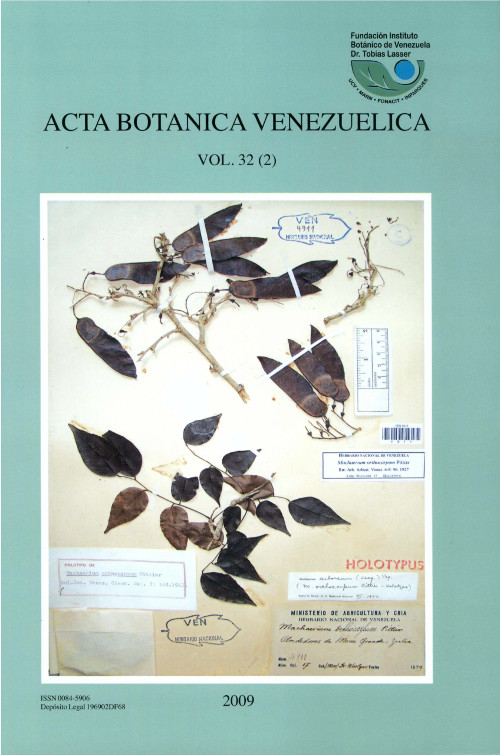PLANTAS COLONIZADORAS EN ÁREAS PERTURBADAS POR LA MINERÍA EN EL ESTADO BOLÍVAR, VENEZUELA
Resumen
RESUMEN
Como parte del inventario florístico de áreas afectadas por minería aluvial de oro ydiamante en el estado Bolívar se visitaron cinco localidades entre 1992 y 1993. La actividadminera forma huecos, lagunas de lodo y colas. En cada localidad las colas se dividieron encuatro áreas de acuerdo al sustrato y se colectaron plantas. Las primeras hierbas y sufrúticesaparecieron en los bordes de las lagunas, cortes y declives. La localidad Asa-Karón presentala mayor riqueza, seguida por Supamo-Parapapoy, El Polaco, Bochinche y Guaniamo.Cyperus odoratus, C. luzulae, Fuirena umbellata, Pityrogramma calomelanos, Trema micranthay Phytolacca rivinoides son comunes a la mayoría de las localidades. Las familiascon más especies son Poaceae, Cyperaceae, Leguminosae, Melastomataceae, Asteraceae,Rubiaceae, Solanaceae, Onagraceae, Bignoniaceae y Clusiaceae.
ABSTRACT
As part of the floristic inventory of some disturbed areas for gold and diamond’s alluvialmining in Bolívar State five localities were studied during the years 1992 and 1993.Mining activities cause holes, mood ponds and tails. In each locality the tails were dividedin four areas according to the substrate and the plants were collected. The first herbs and sufrutescentplants showed at edges of the ponds and holes. Asa-Karón is the richest locality,followed by Supamo-Parapapoy, El Polaco, Bochinche and Guaniamo. Cyperus odoratus,C. luzulae, Fuirena umbellata, Pityrogramma calomelanos, Trema micrantha and Phytolaccarivinoides are common species at the majority of the localities. The families with morespecies are Poaceae, Cyperaceae, Leguminosae, Melastomataceae, Asteraceae, Rubiaceae,Solanaceae, Onagraceae, Bignoniaceae and Clusiaceae.
Descargas
Descargas
Número
Sección
Licencia
© Instituto Experimental Jardín Botánico "Dr. Tobías Lasser" |


